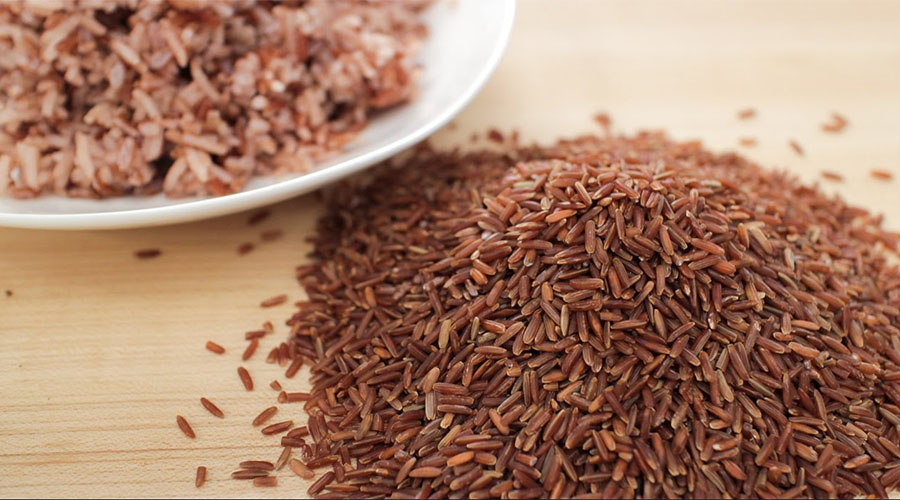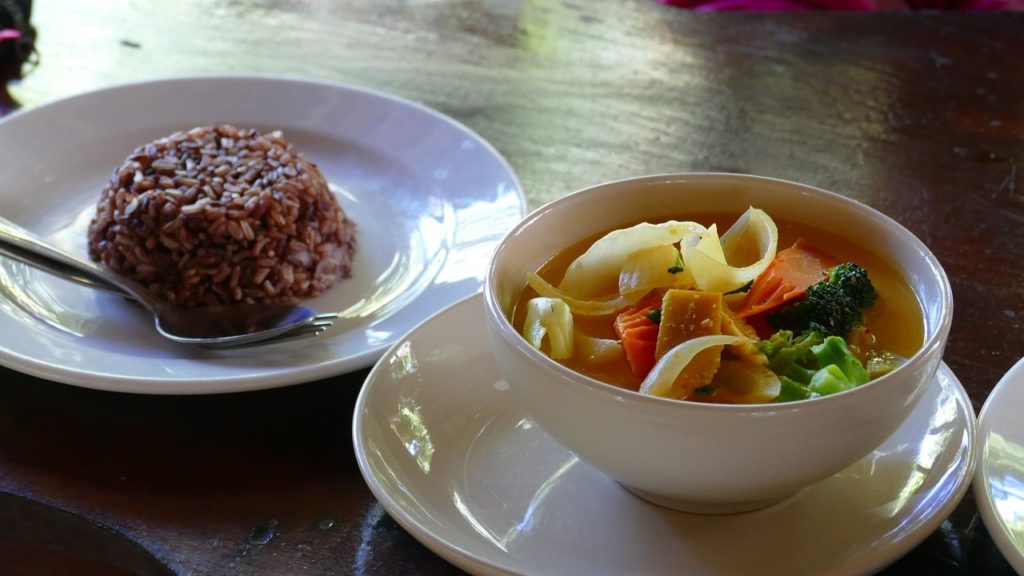Himalayan Red Rice: Health Benefits & Nutrition Facts
The history of red rice goes back to its origin in China, dating back to 800 A.D. Besides being loved by health gurus and fitness fanatics because they bears low carbohydrate content in them. Since Himalayan red rice is low in calories and high in nutritional value it contains numerous health benefits as well.
There are almost more than 30, 000+ varieties of rice available around different parts of the world, but we are hardly aware of more than 3-4 types of rice which are easily available in the commercial market. With the sudden rise of Himalayan Red Rice as a new trend on various social media platforms and it even becoming the preferred rice variety by the famous celebrity chef’s over the other two varieties of rice that are available in the market. We asked ourselves why? Why has Himalayan Red rice become so popular?
Well to answer that we did some research and found out that according to food and trend experts, it is all because of the nutritional values red rice contains. As a rich source of fibre and antioxidants, this wonder grain also helps to control the normal breathing pattern additionally they also prevent the common disease of the airways of the lungs which is oftentimes referred to as asthma. With containing such amazing health benefits, red rice is also considered virtuous for oxygen absorption by our body. Rich in iron content, it helps in improving the circulatory system by proper oxygen supply to every cell for proper functioning and repair. Since fiber helps you to keep you full for longer periods, and red rice being fat-free also the risk of obesity is also considerably lowered by its consumption. We believe that having so many amazing health benefits would explain why, red rice is the new buzz of the fitness and diet world and therefore even celebrities prefer it and share the creative ways to play around it on social media.
Nutrition facts about Himalayan Red rice
- Calories 218
- Total Fat 1.6g grams
- Saturated Fat 0.3g grams
- Polyunsaturated Fat 0.6g grams
- Monounsaturated Fat 0.6g grams
- Cholesterol 0mg milligrams
- Sodium 2mg milligrams
- Potassium 154mg milligrams
- Total Carbohydrates 46g grams
- Dietary Fiber 3.6g grams
- Protein 4.6g grams
- 1.5% Calcium
- 5.8% Iron
* Values are based on 2000 calorie diet.

7 Himalayan Red Rice Health Benefits
The nutrients in Himalayan red rice provide multiple health benefits. They include:
1. Lowers the risk of obesity as one serving of Himalayan red rice contains 200 calories. That equals about 10 percent of your daily intake, if you follow a 2,000-calorie diet . Red rice also holds relatively low caloric density in comparison to other foods.
2. Diets low in fat helps to prevent clogged arteries and also assist in weight maintenance. You’ll get 4 grams of protein, approximately 8 percent of your 50-gram recommended daily consumption, with a serving of red rice. These rice does not contain cholesterol or fat, which makes red rice a healthy inclusion to your salver.
3. The low Red rice glycemic index helps in controlling the sugar level for diabetic patients. Apart from that, there are a few more natural ingredients, which help in keeping the sugar level balanced.
4. Himalayan red rice are fortified with powerful antioxidants as they possibly help reduce the spread of cancer cells and even inhibit the formation of tumours.
5. It contains 2 percent of your recommended daily allotment for iron, 80 percent for manganese, 20 percent for magnesium, 20 percent for phosphorus, 35 percent for molybdenum and 6 percent for zinc. These Vitamins and minerals support cell mitosis and the production of DNA and genetic material.
6. Helps Prevent Heart Disease and maintain a healthy digestive system. One serving of Himalayan red rice provides about 21 percent of our recommended daily intake of 225 grams of carbohydrates and Three grams of those carbs come in the form of dietary fibre. A diet rich in dietary fiber also lowers your risk of other obesity-related conditions.
7. In traditional Chinese medicine, red rice includes a history of naturally handling several health issues, which range from increased blood flow to better digestion to eliminating blood blockages.
Different Varieties of Himalayan red rice
Majorly grown in south-central Asia, Himalayan Red Rice is a unique, medium-grain variety of rice. It has a rich, slightly sweet and complex flavour reminiscent of coconut, with a firm texture. Because of its nutty flavour, delicious earthy taste and higher nutritional value it is grown throughout the world and is consumed worldwide. The different varieties of Red Rice are:
1. Oryza longistaminata
2. Oryza punctata
3. Thai Red Cargo rice
4. Bhutanese red rice
5. Camargue red rice
6. Kerala Matta rice
7. Colusari Rice
How to cook Himalayan red rice at home
Himalayan red rice is considered ideal rice for salads, as through cooking process its individual grains hold up well and maintains it shape . It also Pairs remarkably well with intensely flavored meats and seafood, as well as ingredients such as mushrooms. Other uses of these rice includes dishes in which rice can be used as main ingredient, such as pilaf, stir-fry or pudding.

Red rice Combine’s well with white and brown rice as intense russet-red hue of these Himalayan red rice will colour any other rice cooked with them. Not only that these rice pairs beautifully with green vegetables as well.
These rice works well in casseroles, fried rice or as a side dishes nicely.
In Bhutan, this rice is known by its local name bhutanese red rice which is one of their staple food and is often cooked in combination with mushrooms and chili peppers, since its rich taste stands up to these assertive flavours of these vegetables and strong spices used in their local cuisines.
The Bottom Line
Himalayan Red Rice is a low-calorie, nutritious food that contains several important vitamins and minerals. With numerous ways to use it in salads and other recipes, it should be easy to add them as a dietary staple to your regular diet. Any way you choose to eat this healthy whole grain, you will be making a wise choice for your overall health.



